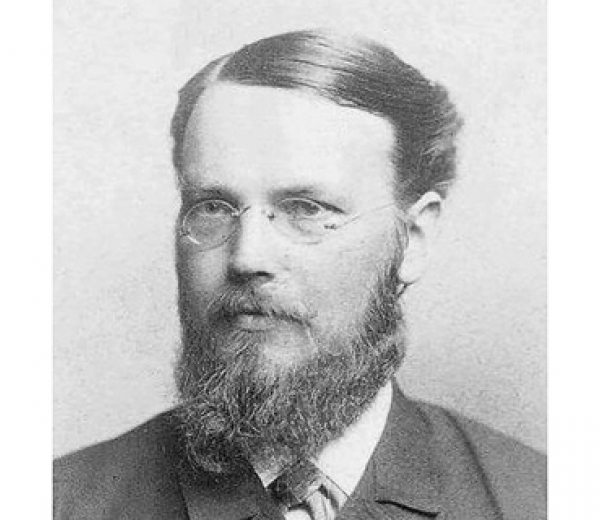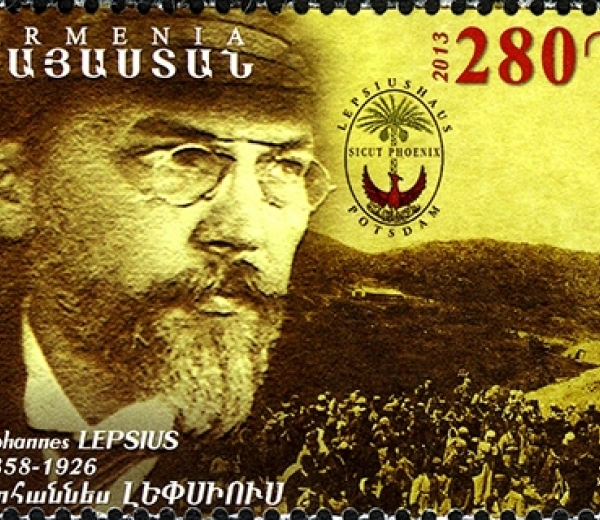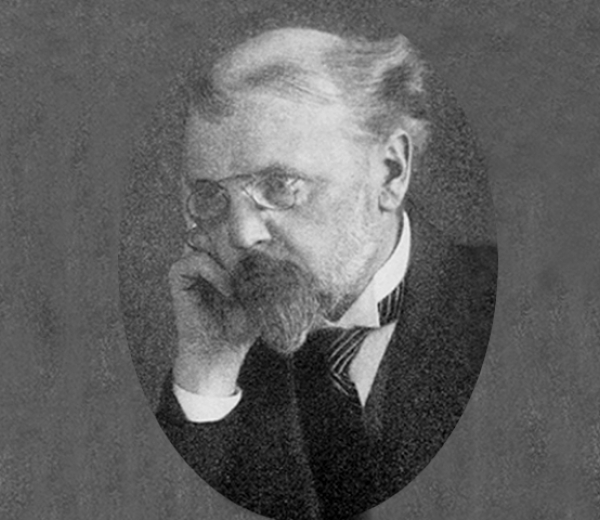Saviors in History: Johannes Lepsius
Submitted by global publisher on Mon, 07/25/2016 - 13:27
English
Intro:
After decades in obscurity, Johannes Lepsius’s name resurfaced in 2005, when the German Bundestag passed a resolution marking the 90th anniversary of the Armenian Genocide. The resolution, unanimously approved on June 16, 2005, stated: “The life’s work of Dr. Johannes Lepsius, who fought tenaciously and successfully for the survival of the Armenian people, must not be consigned to oblivion.”
Weight:
1 600
Story elements:
Text:
After decades in obscurity, Johannes Lepsius’s name resurfaced in 2005, when the German Bundestag passed a resolution marking the 90th anniversary of the Armenian Genocide. The resolution, unanimously approved on June 16, 2005, stated: “The life’s work of Dr. Johannes Lepsius, who fought tenaciously and successfully for the survival of the Armenian people, must not be consigned to oblivion.”
Text:
Lepsius’ first encounter with the Reichstag, 90 years earlier, was less successful. After returning from a journey to Turkey in October 1915, he tried to inform the German public of the persecution of Armenians. He also denounced the German-Turkish military alliance during World War I, saying that it made Germany’s military and political leaders into “slaves of the Sublime Porte” – the Young Turk government in Constantinople. The Foreign Office responded with claims that Armenians were to be considered “insurgents” supported by the enemy.
A philosopher and a believer
Johannes Lepsius learned of the Armenians’ fate through his work as a Protestant theologian. Born on December 15, 1858, he was the youngest son of well-known Egyptologist Karl Richard Lepsius and his wife Elisabeth. His mother was the great-granddaughter of writer and bookseller Friedrich Nicolai, a pivotal figure in the Berlin Enlightenment of the mid-18th century. A hundred years later, Johannes Lepsius’ family home was also a center of cosmopolitan and liberal life in Berlin. His parents’ guests included renowned men like Alexander and Wilhelm von Humboldt and the Brothers Grimm.
After graduating from secondary school, Lepsius went on to study theology in Erlangen. At the end of his first semester he left both the university and the city. He moved to Munich, where he abandoned his theological studies and swiftly earned a doctorate in philosophy by 1880. Despite his excellent degree, he decided against an academic career and devoted himself once more to theology, this time in Greifswald.
Later the same year Johannes Lepsius went to Jerusalem, where he worked as a teacher at the German Protestant School and an assistant preacher in the German community.
When he joined the board of a Syrian orphanage, he was confronted with the persecution of Christians – for the first time in his life.
The orphanage had been founded in 1860 after massacres among the Christian population in the region. However, 19th-century Jerusalem was a multi-ethnic city where Muslims, Christians and Jews mostly co-existed peacefully under Ottoman rule.
This was where Lepsius met Margarethe Zeller, known to everyone as Maggie, the granddaughter of the Protestant Bishop of Jerusalem. She became his first wife. They left Jerusalem in 1886 and lived in Frankfurt am Main for a couple of months, before Lepsius took up a post as pastor in the small village of Friesdorf near Wippra in the Harz in January 1887. In order to fight poverty in the region, he founded a rug-weaving mill, which soon employed 40 women.
German charity
When he learned of the atrocities being committed against Armenians in the Ottoman Empire under the reign of Abdul Hamid II from 1894 onward, Lepsius resigned from his tenured post and waived his right to a pension. As many as 100,000 Armenians are believed to have perished in what is now known as the Hamidian massacres.
In 1896 Lepsius established the German Charitable Foundation for Armenia and decided to travel to areas inhabited by Armenians to see the situation for himself.
In the spring of 1896, disguised as a rug trader, he traveled around as much of Eastern Anatolia as the Ottoman authorities allowed. Despite their interference, he discovered numerous sites that bore traces of the atrocious pogroms that began in 1894, corroborating the eyewitness accounts of the time. Lepsius was shocked. Immediately after his return to Germany, he tried to raise public awareness through a series of lectures about what was happening in Eastern Turkey.
Telling the truth
The Berlin newspaper Der Reichsbote printed the first installment of his article series “The Truth about Armenia” on August 12, 1896. The articles also soon appeared as a book, titled “Armenia and Europe – An indictment against the Christian Great Powers and a call to the Christian Germany,” which sold out seven editions within its first year of publication. The book was translated into several languages and put Armenians’ fate in the spotlight. The Berlin section of the German Charitable Foundation for Armenia, which had Lepsius as its secretary and boasted prominent personalities such as Graf Andreas von Bernstorff as members, became the German Oriental Mission. It went on to provide relief for Christian refugees in Aleppo, Northern Iran and Bulgaria, among other places.
Lepsius embarked on lecture tours to raise awareness and funds for the relief organization, while his wife Margarethe, who bore him six children, went about the strenuous day-to-day management of her husband’s various humanitarian efforts. This pushed her to physical exhaustion, and her early death in 1898 dealt a devastating blow to Lepsius. In 1900 he married Alice Breuning, with whom he had six more children. The cost of supporting his large family would prove problematic for Lepisus through his entire lifetime.
In 1899 Lepsius returned to Eastern Anatolia, only to unearth more proof of the systematic persecution of the indigenous Armenian population. In the following years, the German Oriental Mission constructed schools, workshops and hospitals for Armenian and other Christian refugees on the outskirts of the Ottoman Empire, thus becoming a large relief organization. In addition to his other commitments, Lepsius founded the German-Armenian Society and held the post of chairman.
Image:

Text:
|
Johannes Lepsius |
Meeting Enver Pasha
In April 1915, as word spread around Europe that the Young Turk government had ordered the systematic persecution and deportation of Armenians from their historic settlements, Lepsius embarked on another journey to Turkey, via Bucharest and Sofia. On the way, Armenian clergy provided him with detailed accounts from survivors of the massacres.
On August 10, 1915 Lepsius was granted an audience with the Minister of War and high-ranking Young Turk Enver Pasha. Although received as an envoy of the Oriental Mission and of his church, Lepsius failed to change Pasha’s mind. The politician restated that he would not tolerate any foreign interference in the internal affairs of his country. He refused to budge, even when challenged over the economic damage that the forced migration of Armenians was causing across the Eastern territories of the Ottoman Empire.
Rejected at home
Back home, Lepsius met with flat rejection when he urged the German government to intervene on behalf of the Armenians. Chancellor von Bethmann-Hollweg noted in a dispatch to the German ambassador in Constantinople: “Our sole and primary aim is to ensure that Turkey stand by us until the end of the war, no matter whether or not the Armenians are ruined by it.” Political parties in Germany showed no great interest in the issue either.
Undaunted by these setbacks, Lepsius defied wartime censorship to publish his report on the situation of Armenian people in Turkey in 1916.
He had 25,000 copies printed and sent to members of the Reichstag and the Landtag of Württemberg, Protestant rectories and numerous editors-in-chief of both national and regional newspapers. Every copy was marked “printed as manuscript – strictly confidential.” When the German Interior Ministry banned the distribution and publication of the report on August 7, 1916, seizing the remaining copies, the report was already widely available to the general public. Lepsius escaped potential punishment by taking up residence in the neutral Netherlands, where he also hoped to improve his frail health in his battle with diabetes.
In 1918 he was astonished to receive a commission to publish documents that illustrated the German position on the Armenian question. The Foreign Office had most likely approached him in a bid to deflect claims of complicity in the Genocide. The documents were only published in 1919 – after the end of World War I – under the title “Germany and Armenia 1914-1918 – A collection of diplomatic records.” Lepsius later faced criticism for publishing material that had been manipulated by the Foreign Office, but he dispelled all doubt about his motivation and emphasized his determination to ensure that nobody could deny the Genocide of the Armenians.
A personal triumph
Soon after the Armenian Genocide was back in the spotlight in Germany due to a sensational court case. An Armenian student, Soghomon Tehlirian, faced a district court in Berlin on charges of murdering Talaat Pasha. He was acquitted at the end of a spectacular trial on June 3, 1921. Pasha, previously the Young Turks’ Minister of the Interior, was living in exile in Germany at that time. Tehlirian himself confessed to shooting Pasha on March 15, 1921. It was considered a personal triumph for Lepsius when his testimony before the court helped win the acquittal.
Lepsius had advised Tehlirian’s lawyers as they prepared his defense and spoke in court as an expert witness. He demonstrated Talaat Pasha’s complicity in the Genocide on the basis of the diplomatic records he published in 1919 and with dispatches signed by Pasha himself.
Tehlirian’s acquittal, however, was ordered on technical grounds. A medical report certified that he was in a state of diminished capacity due to epilepsy at the time of the assassination. However, the role reversal between perpetrator and victim and the political dimensions of the case made for a global sensation.
It was the first time in legal history that a national court was indirectly tasked with delivering a verdict in a trial that revolved more around acts of Genocide committed on the territory of another sovereign nation than the murder charge itself. The verdict was – indirectly once more – in favor of the victims. This sensational turn the trial took can largely be attributed to the hard work of Johannes Lepsius, the German “guardian angel of Armenians.”
Image:

Text:
|
Johannes Lepsius on a 2013 Armenian stamp |
At that time, Lepsius’s poor health deteriorated quickly. On February 3, 1926 he died during a stay at a health resort in Merano, where he was subsequently interred.
A series of books was published, international congresses held in both Germany and Armenia and commemorative plaques were unveiled to mark Lepsius’s 150th anniversary in 2008. The previous year, the budgetary committee of the German Bundestag incurred the deep official displeasure of the Turkish government when it voted to allocate almost €600,000 to the Lepsius-Haus e.V. aid association. These funds were used to convert his Potsdam residence in Große Weinmeisterstraße 45, where he lived from 1908 to 1925, into a research facility and meeting place.
Today the residence is more than a research facility. It has become a center of reconciliation and cultural exchange for Germans, Turks and Armenians – a belated acknowledgment of the life and work of a man who once wrote in a letter to his father: “I keep on banging my head against a brick wall only to determine its resistance and my own strength by examining the size of my bumps and bruises.”
Subtitle:
The German “guardian angel” of Armenians
Author:
Wolfgang Labuhn
Header image:

